To help flower growers, manufacturers offer new developments. An interesting and practical solution is self-watering orchid pots, which are becoming more and more popular.
Haven’t tried this innovation yet, or doubt its effectiveness? Then this article is exactly for you.
We described the device and the principle of operation of self watering pots for orchids, outlined the pros and cons of their use. An overview of popular models will help you choose the right option. For lovers of homemade products – a checklist for organizing automatic watering for orchids with your own hands.
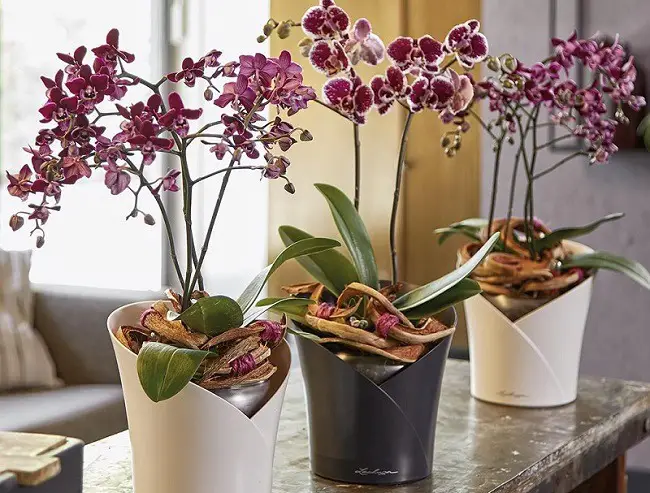
what is self watering pots for orchids?
We are talking about “smart pots”, which allow not only to leave orchids without care for a long time, but also have a beneficial effect on their development.
Some are simple, while others are sophisticated technology devices with wireless connectivity and smartphone apps.
“Smart” pots can include an automatic watering system, LED lighting, built-in timers, sensors. They give recommendations on growing orchids, inform about their condition.
Each model has its own instructions for use, which must be studied before use.
Check out Best Orchid Pots For Phalaenopsis.
self watering Devices for orchids
Today, various systems and technologies are used to help many hybrid orchids stay on self watering for a long time.
So, drip irrigation allows you to irrigate a collection of more than 20 orchids. The system includes a tank with many tubes through which water flows to droppers.
Droplet makers are made of plastic or have a ceramic tip placed in the substrate. Usually, the dropper is adjusted using the existing wheel.
In more advanced forms, ceramic droppers act as substrate moisture sensors and, depending on its condition, either supply water or block it.
Another type is a self-irrigated system, in which the so-called “bottom” or combined irrigation takes place. The first is carried out through the holes at the bottom of the inner pot, the second – also through additional holes on the side.
Such a container consists either of a container with a double bottom, or of a planter and a pot-liner installed in it.
Most often, the design has double walls with a gap that forms a water reservoir. The liquid enters through the filler hole and through the capillary rods enters the substrate to the roots. For convenience, these pots have a special float, which determines the amount of liquid in the tank.
Smartpots and other “smart” pots take care of all the worries, including self watering. They include three main parts – the case, the logic board and the cartridge.
Principle of operation self watering pots
In self-irrigation, the principle of capillary rise of liquid is used. When watering, the wick of a permeable material is contacted with another hygroscopic material, for example, perlite.
That is, one end of the tourniquet is immersed in a container with water or a nutrient solution, and the other is brought out into the lower layer of the substrate.
Water from the tank rises due to the mutual attraction of the liquid molecules. From one material to another.
The higher the surface tension forces that occur at the boundary of the separation of liquid and solid substances, the more active the capillary absorption of the wick and, therefore, the more efficient the conductivity.
In “smart pots”, information about the moisture content of the substrate, the amount and frequency of watering is read from the cartridge. Before that, batteries are installed, a liter of water is poured and the cartridge is placed. Then the reading of the parameters of the flower begins.
If everything is good, the indicator gives a green light. When you change the cartridge, the device already knows how to care for the orchid.
The main principle of self-irrigation is that water enters only the root zone of the flower.
The amount and frequency of water supply is precise and easily adjusted to meet the needs of the orchid at each stage of its development.
When transplanting an orchid into a pot with automatic watering, you need to water the plant several times from above to evenly distribute the liquid over the substrate
The whole revolutionary nature of this method lies in the fact that by adjusting the regime of water and fertilizer supply, the plant can be influenced in a direction, slowing down or accelerating its flowering, ensuring healthy growth of the root and green mass.
self watering pots for orchids: pros and cons
Self-watering planters are easy to use and greatly simplify the life of forgetful gardeners, reducing the risk of death from drought for orchids. They have practically no drawbacks, except, perhaps, one – the cost.
| Pros | Cons |
|---|---|
| Prevents over watering and root rot | With a shallow location of the roots, the upper layers of the substrate dry out, and the lower ones are damp, which leads to waterlogging and rotting of the roots. |
| Saves time spent watering large orchid collections | At low temperatures, the roots are not able to absorb the incoming liquid and the plant wilts. |
| Promotes intensive absorption of fertilizer solutions by roots and their complete absorption | |
| Provides the opportunity to leave flowers without care for a long time |
Its use is most effective if the orchid’s root system is sufficiently developed to reach the wick or wet substrate.
Best Self Watering Pots For Orchids to Buy
| Self Watering Pots For Orchids to Buy | Check Price | |
| 1 | Lechuza 13130 Cubico Color 30-(22 inches Tall) | Buy at Amazon |
| 2 | Santino Self Watering Planter Arte 4.3 Inch | Buy at Amazon |
| 3 | Santino Self Watering Planter CALIPSO Oval Shape | Buy at Amazon |
| 4 | Parrot Pot Smart | Buy at Amazon |
| 5 | LeGrow Smart Garden Indoor Planter Starter Kit | Buy at Amazon |
LECHUZA CUBICO
Popular self-watering pots include planters from the German company Lechuza. Lechuza Cubico are elegant, calm or bright, stylish flower pots, equipped with retractable handles for transferring flowers and a stand on wheels.
Thanks to a wide range of sizes, the planter is suitable for any premises: apartments, offices, houses or cottages.
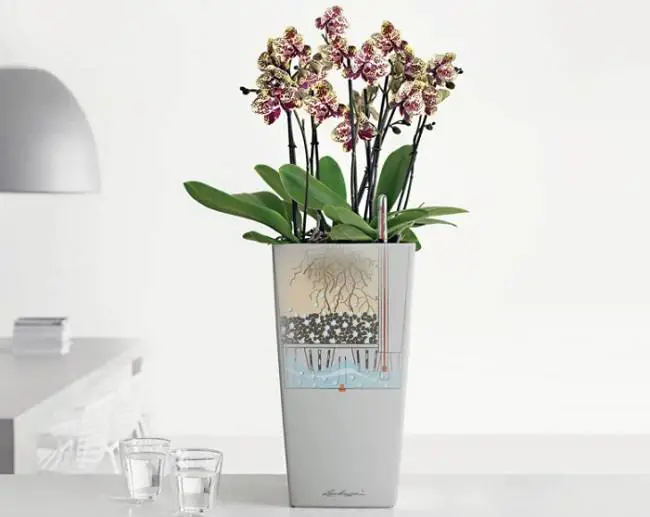
The system is capable of continuously providing orchid roots with moisture and nutrient solution for up to 12 weeks. In addition, the planter is equipped with a special hygroscopic substrate Lechuza-Po.
Using self-watering orchid pots is easy, as the mechanism of the system is simple and straightforward.
The LECHUZA CUBICO substrate is poured into a pot with drainage holes, the soil for orchids is placed on top, in which the flower itself is planted. Then the pot is placed in a planter with a hole for pouring water in it and a liquid level indicator that lets you know about the water supply.
Double walls provide good thermal insulation, reducing the rate of water evaporation
Flowerpots are made of molded high-pressure polyethylene, resistant to impacts, aggressive environments, easy and convenient to use.
Santino Arte Self Watering Pot
Planters Santino Arte have basic automatic watering. All of them are frost-resistant with a high level of protection against UV rays. 15 models are available for the buyer, each of which has up to 6 types of displacement and up to 10 different colors.
The design consists of a planter, a planting pot on legs and is equipped with a drainage system
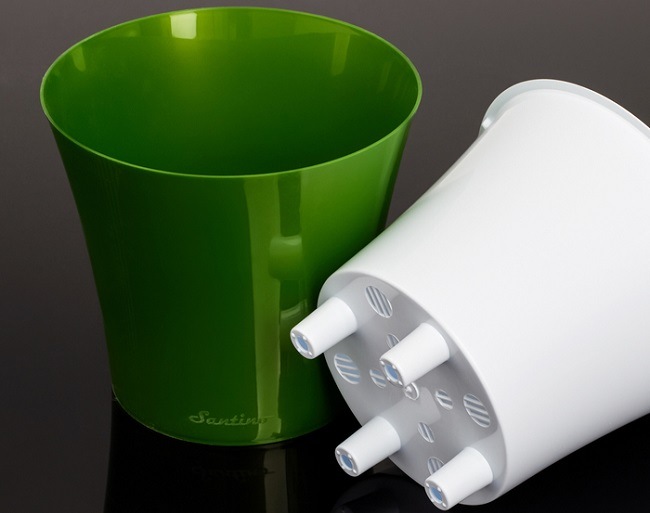
This eliminates the possibility of water stagnation and root rot. Excess moisture flows into the planter, which allows you to coordinate the moisture level of the substrate throughout the month.
Santino Self Watering Planter
These flowerpots, wide in diameter, are perfect for compositional, group plantings of orchids , as well as adult flowers that occupy a large area.
Calipso flowerpots are elegant, brightly colored flowerpots of an elongated shape. They are convenient for placement not only on the windowsills of city apartments, but also on office tables.
When leaving on vacation or a business trip, you can not worry about the condition of the orchids left in the office.
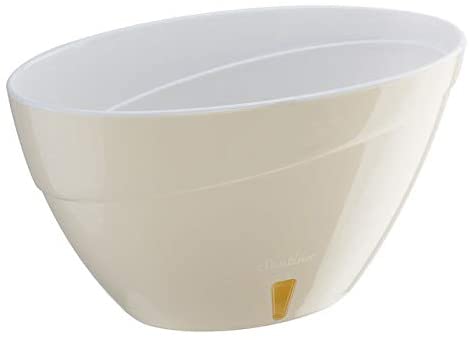
Calipso planters are made of safe polypropylene, equipped with an automatic wick system and water level control
Presented in volumes of 2; 3.3, and 3.8 l.
Smart Pot Parrot Pot
Equipped with four touch sensors: temperature, light, substrate moisture and fertilizer balance. The volume of soil in a pot is 2.4 liters.
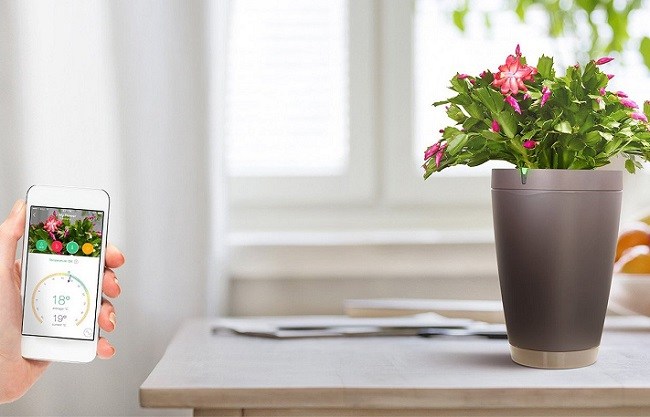
Plant care simplifies the ability to control parameters via a smartphone
LeGrow Smart Garden
Delivery is carried out complete with LED lamp. Along with the standard functions, it sets the desired lighting schedule, for example 12 hours of light and 7 hours of darkness.
Very convenient for orchids, especially in winter. The device is equipped with two, three, five, six and ten pots.
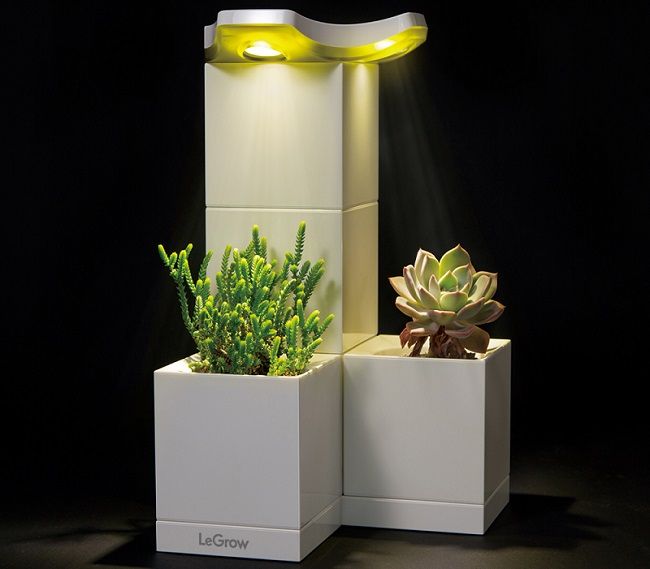
Modular system for growing home flowers – “smart garden”
DIY: Homede self watering pots for orchids at home
It is most reliable to leave the orchids in the care of a compassionate neighbor during the holidays. However, there are other ways to preserve flowers without burdening other people with unnecessary problems. You can, if necessary, organize automatic watering for orchids yourself.
There are many methods for creating such systems. This is also a wick method, when the irrigation system is carried out using a nylon cord, lace, rope.

One end is placed in a container with water, the other is fixed in the bottom layer of the substrate
And, probably, the most popular and inexpensive method is the bottled method, where irrigation occurs through small holes on the neck of a plastic bottle inverted and immersed in the ground.
Below is another simple method of orchid irrigation – automatic watering with a medical dropper.
Necessary tools and materials
They buy an inexpensive infusion system (dropper) from a pharmacy and prepare plastic bottles. You will need one for each pot.
The system includes:
- plastic transparent tubes, their number depends on the number of flowerpots;
- drop former (dropper);
- clamp valve that controls the rate, frequency of fluid or nutrient solution.
It is necessary to think about devices for fixing the tank.
Step by step instruction self watering pots for orchids
Check for integrity and good patency of plastic hoses. To do this, each of them is blown.
Then proceed as follows:
- A hole is made in the cork of the appropriate volume of the bottle and a dropper is inserted into it, fixed with adhesive tape for reliability.
- Install a bottle of water and fix it necessarily above the pots.
- Place the lower end of the tube in the substrate with the orchid. The liquid under the pressure of its own gravity begins to move along the tube through the dropper to the very bottom.
- Set the controller of the device to the required speed of drip irrigation.
You can fix several hoses with electrical tape at once, but then the hole in the plug should correspond to the diameter of the tubes fastened together. They are pushed into the hole to a height of 6-7 cm from the bottom of the cork. Both the cork and the tubes are fixed with adhesive tape. Thus, it is possible to irrigate several orchids from one bottle at once (according to the number of tubes).
The air valve and filter will not allow negative pressure to build up in the system
The device will work without failures and will be an excellent alternative to expensive analogues.